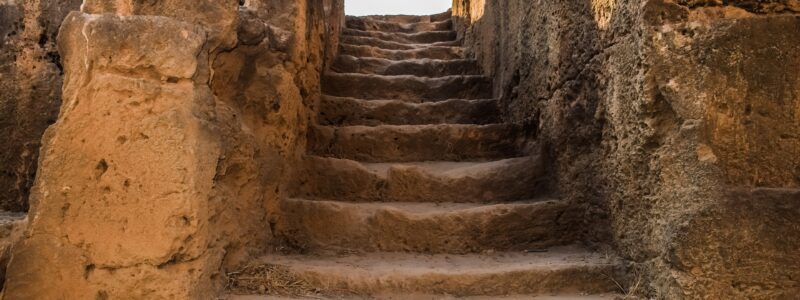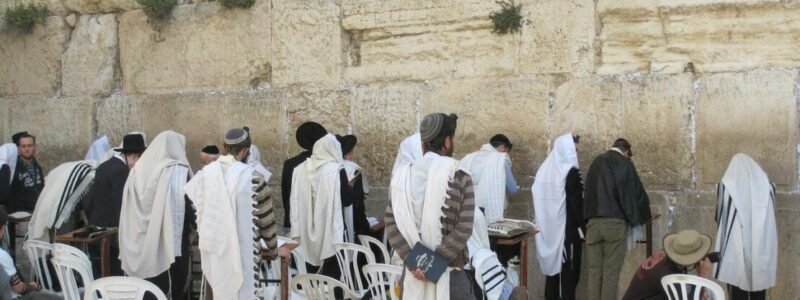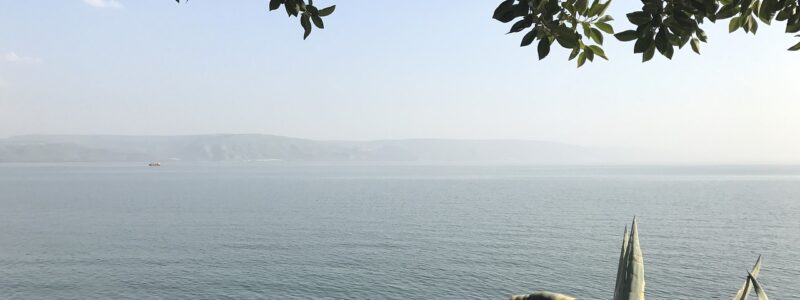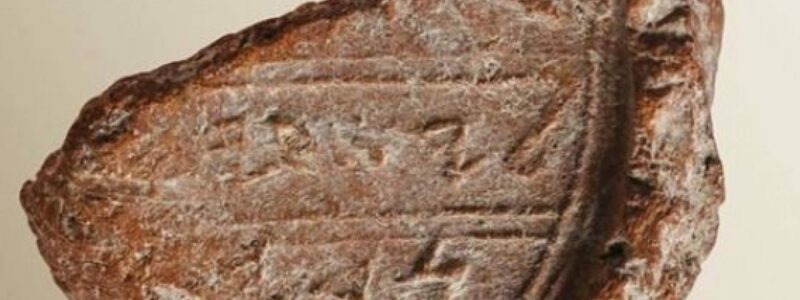Emmaus
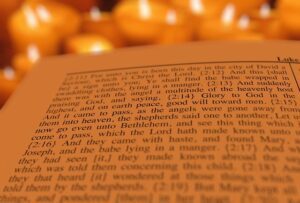
Image by blenderfan from Pixabay
In one of the more interesting passages in Scripture, there are two disciples of early Christianity walking on the road to Emmaus shortly after the crucifixion of Christ. They were discussing the amazing events of the past few days including the trial and execution of their leader.
The story occurs in the Gospel of Luke and gives one of the disciples the name of Cleopas. While walking on the road, they met another person apparently walking the same road whom they did not recognize. These disciples discussed how grief-stricken they were as the ministry of Christ had apparently ended so tragically.
While this discussion was occurring, they asked their new guest to have dinner with them. While they were at the dinner table, the stranger gave thanks for their meal and broke the bread. It was at that point that the two disciples recognized their mysterious visitor as Christ.
Luke then states rather mysteriously that “he disappeared from their sight.” Not that he got up and left, but that he “disappeared.” Apparently, the Christ that visited the two disciples appeared very different from the tortured man that was laid in the tomb.
Finding Emmaus

Image by Michelle Maria from Pixabay
Tel Aviv University archaeologist Israel Finkelstein has uncovered buildings that are over 2,000 years old according to Haaretz newspaper. Piecing together discoveries from the site, the archaeological team believes they have found the village of Emmaus.
The village’s importance in ancient Israel was in guarding the approach to Jerusalem. Finkelstein noted,
“This can be seen in the Iron Age, Hellenistic and early Roman periods. The Hellenistic and Roman period remains she light on the much-debated issue of the location of the New Testament’s Emmaus.
The archaeologists made this announcement associated with a 2200-year old Hellenistic structure. The fortification has a significant history in its own right, as it may have been built by the Seleucid general who defeated Judah the Maccabees. He is the famed Jewish leader fighting against the Greek occupation of Israel. Judah Maccabees was at the center of the Hanukkah story.
A French-Israeli expedition had been excavating at Kiriath-Yearim which is a hill overlooking the approach to Jerusalem. This city is famous in Biblical history for housing the Ark of the Covenant for about forty years during the time of King David.
Finkelstein notes,
The importance of this site, its dominant position over Jerusalem, was felt again and again through time; in the eighth century BCE, and then again in the Hellenistic period and then again after the First Jewish Revolt and the Sack of Jerusalem in 70 CE.
Solving the Puzzle of the Location of Emmaus

Image by Gerd Altmann from Pixabay
The archaeological site of Kiryat Yearim is not only important to the Ark of the Covenant being housed there for decades, but it is also important as being a military site during the Hellenistic occupation. There are massive towers and containment walls indicate can be dated to the first half of the second century BCE.
The walls were then repaired and restored during Roman times during the first century CE according to Israel Finkelstein. This is substantiated by pottery and other archaeological finds including Roman coins. Inscriptions on the hill of Kiryat Yearim and the adjacent village of Abu Ghosh show that there was a detachment of the Roman lesion there.
Connection with Judah Maccabees

Hannukkah – Image by Evgeni Tcherkasski from Pixabay
Judea was ravaged by a war between the Greek Seleucid Empire and rebel Jewish forces led by Judah the Maccabees and brothers.
Judah had an initial triumph which is remembered during Hanukkah with his triumph over the Greeks and reconquest of Jerusalem and the Temple in 164 BCE.
Unfortunately, the war dragged on after that initial victory and there would be several more decades of conflict before the Jews regained control over the area. Judah was defeated and killed in 160 BCE at the Battle of Elasa by a Greek army led by Bacchides. He was a general dispatched to the area who retook Jerusalem and attempt to subdue the rebellion.
He then proceeded to build a series of fortresses guarding the approach to Jerusalem. The question is whether the fortress discovered at Kiriath Yearim could be one of those built by Bacchides.
Josephus’ Antiquities and 1 Maccabees 9 gives a list of the cities that were fortified by the Greek general. These include Bethel, Jericho, Gezer, Bet Horon and other areas. However, Kiriath Yearim does not appear in that list – at least not under that particular name.
There is one unidentified location that is thought to be somewhere west of Jerusalem, on the strategic road – this location is known to Josephus as Emmaus.
Finklestein suggests that the hill at Kiriath Yearim could be the Emmaus that was fortified by Bacchides.
Help from the Gospel of Luke
The identification of Kiryat Yearim as the Biblical Emmaus is helped by Luke. He notes that Emmaus was 60 stadia from Jerusalem which is the distance from Jerusalem to the hill of Kiryat Yearim.
Finkelstein argues that the whole thing falls together well. It would be the perfect location for the missing Greek fortress and is the correct distance west of Jerusalem. But is this the right place?
Benjamin Isaac, an emeritus professor of ancient history at Tel Aviv University, notes,
Finkelstein and Romer have a good case archaeologically, geographically, and topographically. … However, it is a hypothesis and remains a hypothesis.
Others do not believe there is sufficient evidence to definitely link the ancient city of Emmaus to Kiryat Yearim.
Nicopolis
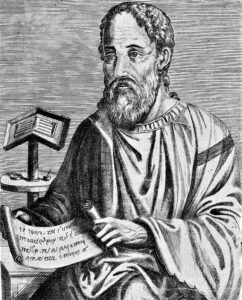
Eusebius – Public Domain, Link
Romer points out Emmaus is likely a Greek version of the Hebrew word Hammah, or hot spring. The possible identification with hot spring, however, does not help in the identification of a potential site as there are no hot springs in the local area.
Traditionally, the Biblical city of Emmaus is identified with another town further up the road in a westerly direction called Emmaus Nicopolis. The second-century Church Father Eusebius of Caesarea identified Emmaus Nicopolis as the Emmaus of the Gospel of Luke.
However, this down is 25 kilometers west of Jerusalem – or about twice the distance mentioned in Luke. This would seem to disqualify it as the location of the Biblical Emmaus.
Ancient Traditions
There are ancient traditions that link Kiryat Yearim with the Biblical city of Emmaus. Some ancient Christian writers in past centuries did not agree with Eusebius’ identification of Emmaus Nicopolis and believed that Christ’s appearance happened at Kiryat Yearim instead.
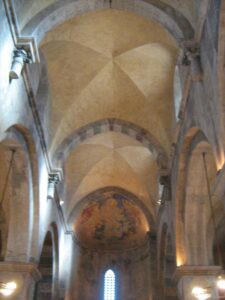
Church of the Resurrection in Abu Ghosh – By Ori~ – אני צילמתי, Public Domain, Link
The Crusaders in the 12th century built the Church of the Resurrection nearby in Abu Ghosh believing it was the location of the Biblical Emmaus.
Romer notes,
Geographically I think that the distance to Jerusalem fits well, so I do think that Kiriat Yearim could have been the Emmaus of the New Testament.
Certainly, we will never know for sure whether this location is the Biblical Emmaus, but it does have the benefit of historical tradition and distance to Jerusalem considerations.
Additionally, the recent work establishing the fortress there as the likely location of the missing Greek fortress of Bacchides built upon the ancient ruins of Emmaus.
Conclusion
The two disciples mentioned in Luke were met by Christ on the road to Emmaus. The identification of a likely site for the village of Emmaus has been the subject of dispute for centuries.
While the traditional site of Kiryat Yearim is one possibility, it is too far from Jerusalem to meet the distance qualifications set forth in Luke.
The most likely spot is the one identified by other Christian writers, and more specifically by the Crusaders. They belonged to the Knights Hospitalier and built a church there that is part of a Benedictine monastery. It was built in 1141 and used as a fortress by the Crusaders until they were driven out by Sultan Saladin.
Unlike many other Christian churches at the time, it was not destroyed or converted into a mosque but continues to exist as a Christian site.
The church was bought by the French State and used by the Benedictines of France. Today, it is part of a mixed Catholic monastery for both men and women.

